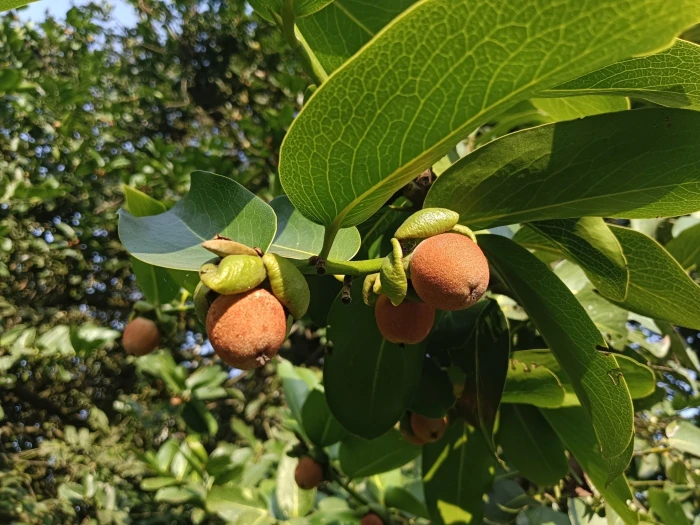Gaub Tree
(Diospyros malabarica)
Gaub Tree (Diospyros malabarica)
/
/

© renjus box
CC BY 4.0
Image By:
© renjus box
Recorded By:
Copyright:
CC BY 4.0
Copyright Notice:
Photo by: © renjus box | License Type: CC BY 4.0 | License URL: http://creativecommons.org/licenses/by/4.0/ | Uploader: renju | Publisher: iNaturalist |

























Estimated Native Range
Climate Requirements for Watsonville, California
| This Plant | Your Site | Plant Suitability for Your Location | ||
|---|---|---|---|---|
| • Precipitation | 4" - 197" | 22" | Your precipitation may be insufficient for this plant. Irrigate N" / year. | Irrigate N" / year |
| • High Temp. | 73°F - 107°F | 77°F | Your summer temperatures are normal for this plant. | Excellent |
| • Low Temp. | -11°F - 74°F | 39°F | Your winter temperatures are normal for this plant | Excellent |
This plant should grow well at your location with about N inches per year (Y minutes per month) of irrigation.
Summary
Diospyros malabarica, commonly known as the Gaub tree or Malabar ebony, is a deciduous or semi-deciduous tree native to the moist deciduous and evergreen forests, often along rivers and streams, in the Indian Subcontinent and Southeast Asia. It can grow up to 98 feet (30 meters) in height with a dense canopy that provides significant shade. The tree is notable for its large, elliptical leaves and small, fragrant, white flowers that bloom in the rainy season. The fruit is a large berry that turns yellow when ripe and is edible, though not widely favored for its taste.
The Gaub tree is valued for its hard, durable, and beautifully dark heartwood, which is used in cabinetry and fine woodworking. In cultivation, it prefers moist, well-drained soils and can tolerate both full sun and partial shade. It is often planted for its ornamental foliage and as a shade tree in tropical climates. However, its potential to become invasive when grown outside its native range should be considered, and it is important to consult local regulations before planting. The tree can suffer from root rot if the soil is not well-drained and may also be susceptible to pests like borers.CC BY-SA 4.0
The Gaub tree is valued for its hard, durable, and beautifully dark heartwood, which is used in cabinetry and fine woodworking. In cultivation, it prefers moist, well-drained soils and can tolerate both full sun and partial shade. It is often planted for its ornamental foliage and as a shade tree in tropical climates. However, its potential to become invasive when grown outside its native range should be considered, and it is important to consult local regulations before planting. The tree can suffer from root rot if the soil is not well-drained and may also be susceptible to pests like borers.CC BY-SA 4.0
Plant Description
- Plant Type: Tree
- Height: 25-35 feet
- Width: 15-25 feet
- Growth Rate: Moderate
- Flower Color: N/A
- Flowering Season: Spring
- Leaf Retention: Evergreen
Growth Requirements
- Sun: Full Sun, Part Shade
- Water: Medium
- Drainage: Medium, Fast
Common Uses
Edible*Disclaimer: Easyscape's listed plant edibility is for informational use. Always verify the safety and proper identification of any plant before consumption.
Natural Habitat
Moist deciduous and evergreen forests, often along rivers and streams
Other Names
Common Names: Gaub tree, Mountain Ebony, Malabar ebony
Scientific Names: Diospyros malabarica, Diospyros biflora, Diospyros citrifolia, Diospyros citrifolia, Diospyros embryopteris, Diospyros glutenifera, Diospyros glutinifera, Diospyros glutinosa, Diospyros glutinosa
GBIF Accepted Name: Diospyros malabarica